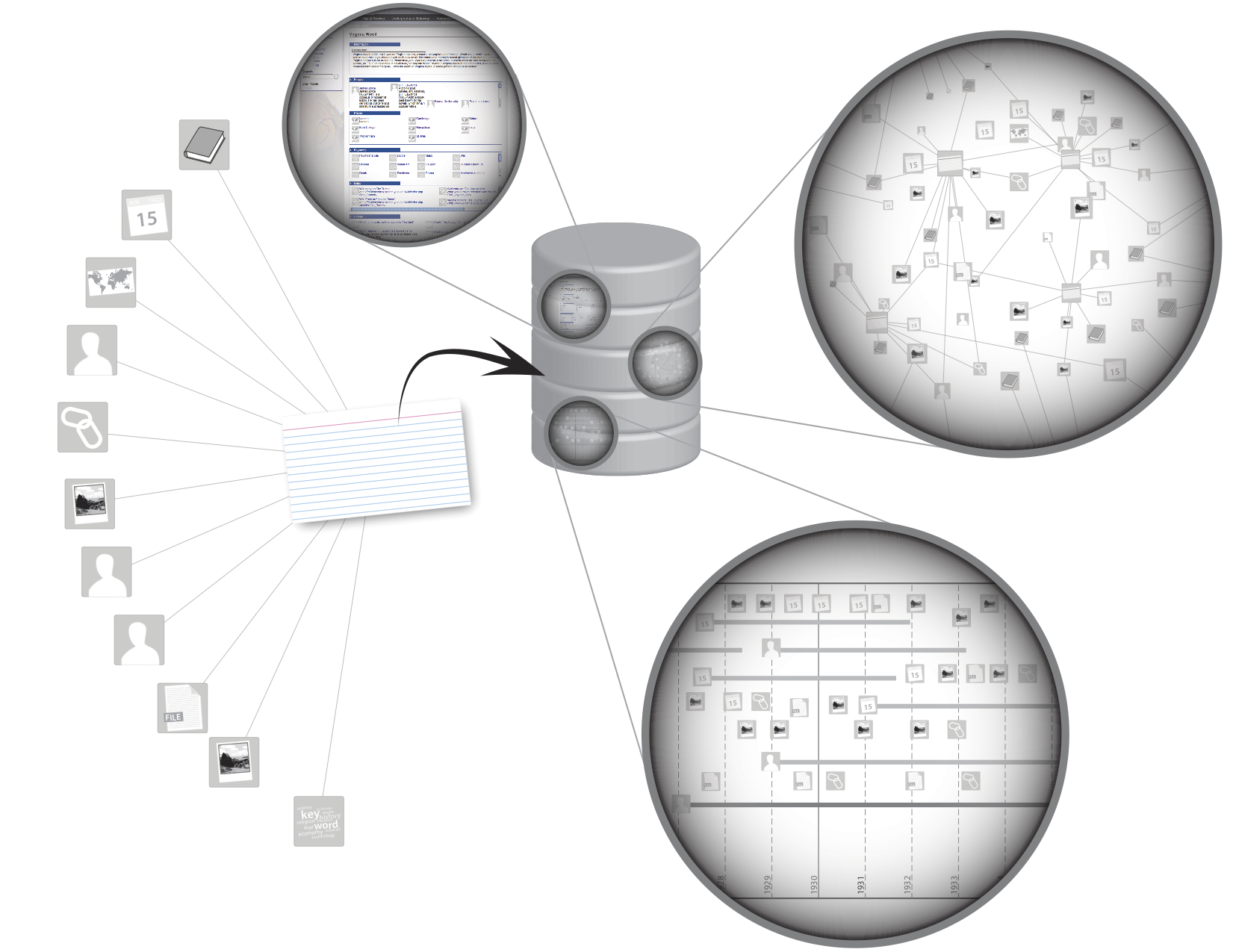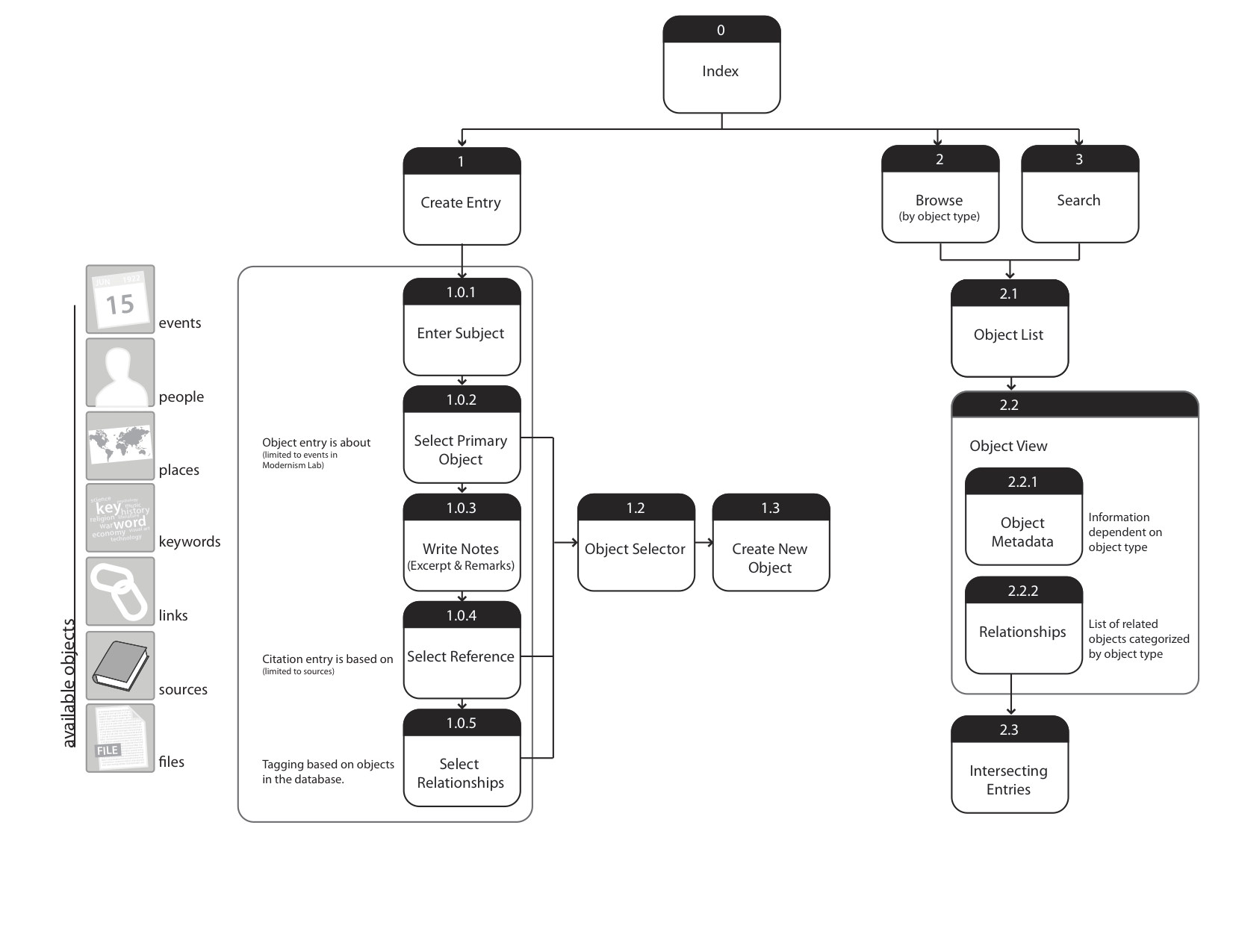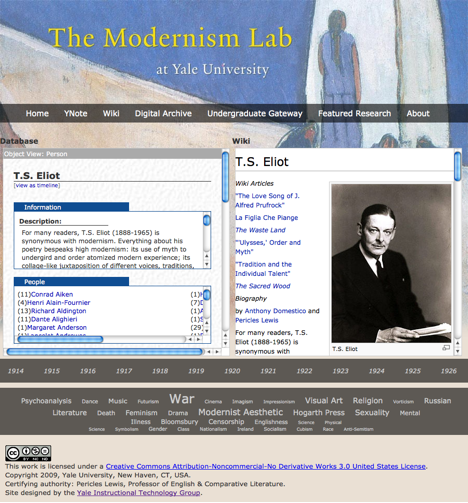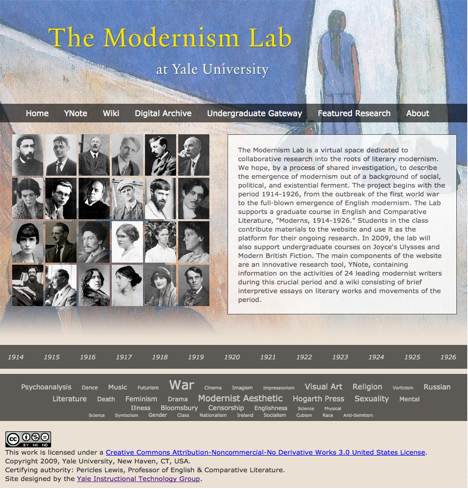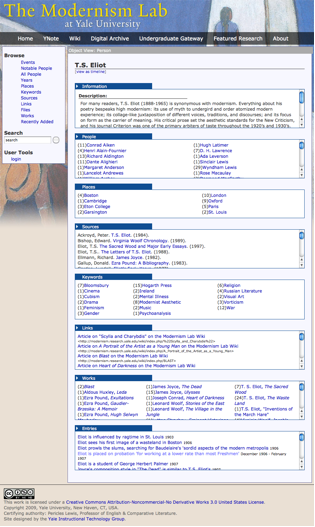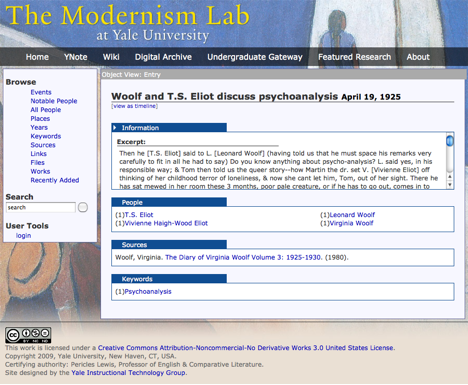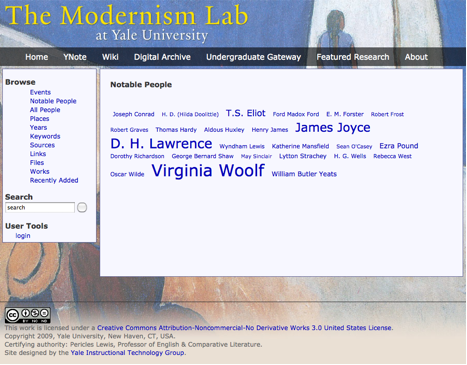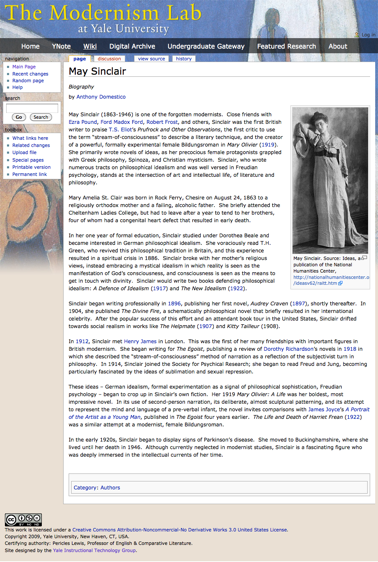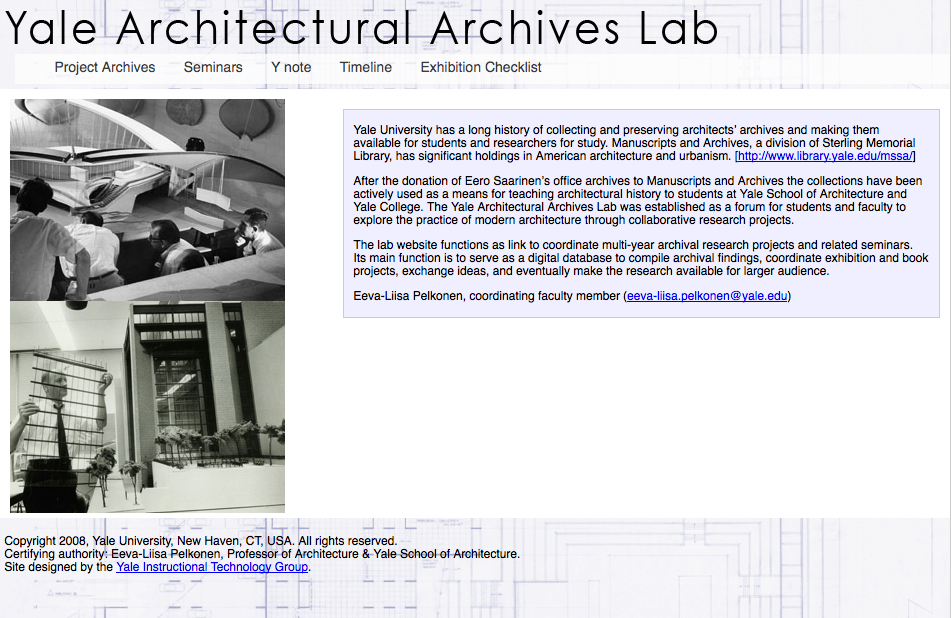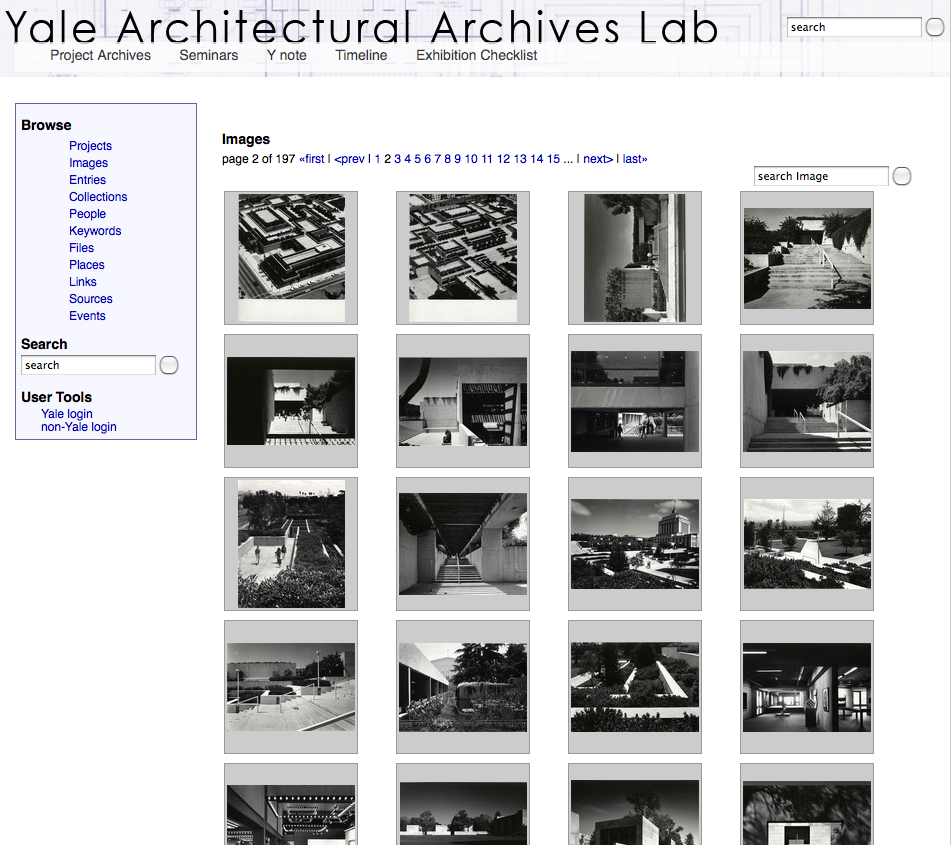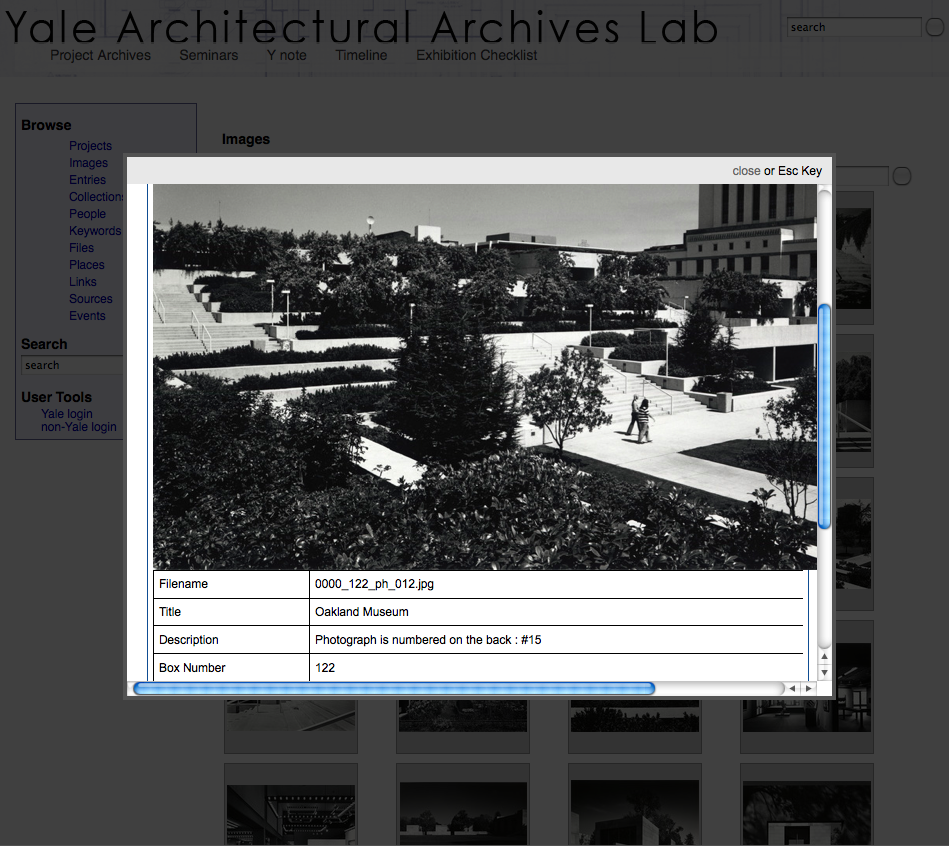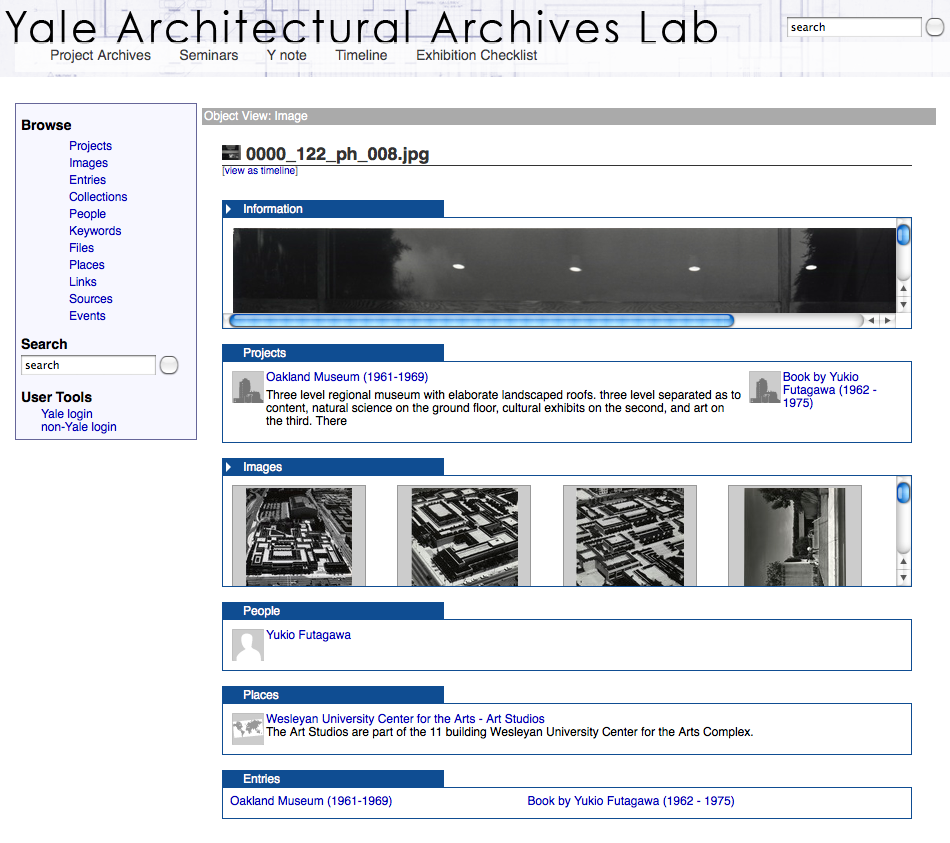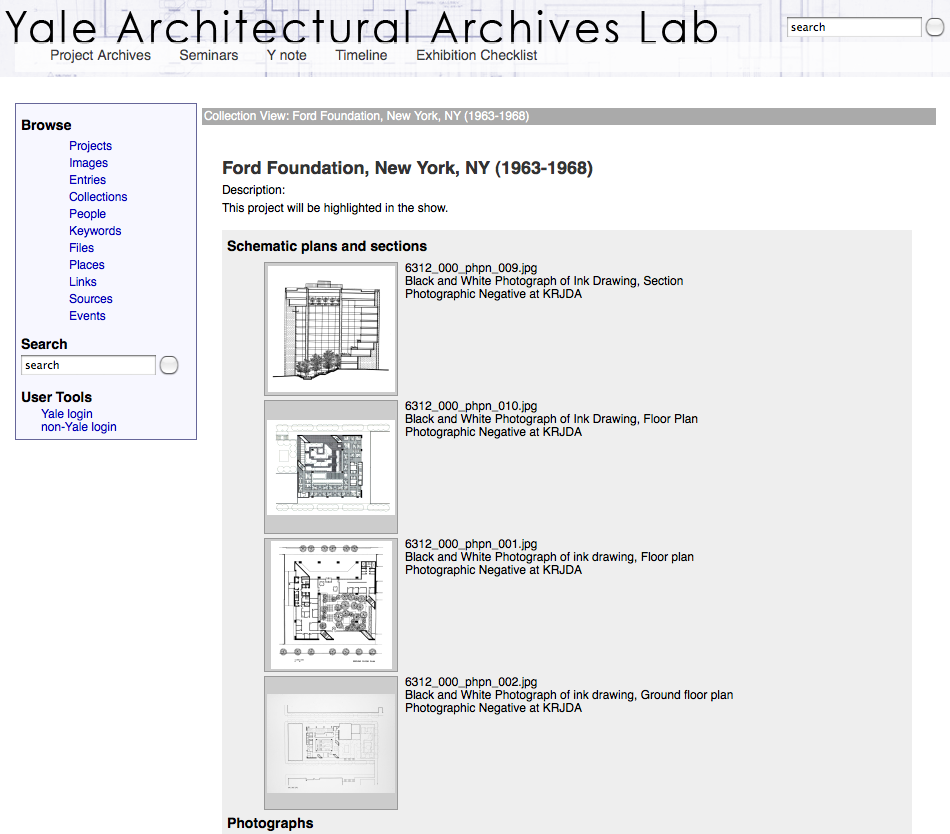In the summer of 2007, Professor Pericles Lewis of Yale’s English and Comparative Literature Department approached Yale’s Instructional Technology Group (ITG) with an observation that served as the foundation of a request. He noted that when one goes out to conduct research on original material, although a lot of interesting information is collected through painstaking work, anything that does not make it into a researcher’s published works is subsequently lost. Furthermore, for course work, the life of a paper is that of the course, any new knowledge being lost due to a lack of a vehicle that can extend its life beyond the confines of a course and a semester. His request was for an online system that would maintain the notes of a group of researchers and allow them to share the results of their research with each other and others interested in the subject matter. To fulfill this request, ITG developed Ynote, an online collaborative research database, following the model of open source web 2.0 applications.
Ynote was initially built around the metaphor of a note card. As a user conducts her research, she fills out digital note cards, which are called ‘Entries’ within the system. Each entry can include citation information, an excerpt from the cited source, and remarks made by the user. As entries are added to the online database, they become available to each user within the system, increasing their utility as their information can become part of multiple researchers’ projects.
Ynote’s digital entry, however, is capable of storing information that surpasses the capabilities of an analog note card. Building on the web 2.0 concept of tagging, each entry can include connections to objects of research, such as relevant events, people, or places. Through this device, the system shifts its focus from privileging bibliographic information, the shortcoming of applications like Endnote and Zotero, to privileging objects of inquiry. As entries in a Ynote database grow, relationships between objects begin to emerge. Through these relationships, the application reveals information that would have been missed under more tradition methods. These relationships also introduce the potential of robust data visualization. The inclusion of events objects allows data to be projected on a timeline, reveal relationships to historical events and trends. Currently, Ynote is integrating the Simile Timeline tool (reference here) developed at MIT to create interactive timelines that visualize subsets of the data.
Although Ynote was initially developed to organize and share research notes on a particular subject, it has quickly developed into a visualization and teaching tool. The prototype was built as a stand alone custom web application. The production version is being built on top of WordPress.

